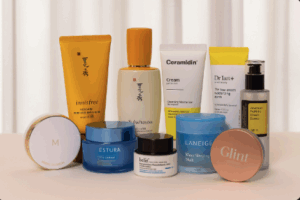SEOUL ¬Ý‚Äî The phrase ‚ÄúK-beauty‚Äù has become shorthand for a global skincare phenomenon originally rooted in South Korea: multi-step regimens, innovative ingredients such as ginseng, snail mucin and heart-leaf, and a cultural wave driven by K-pop and K-drama.
In 2024, the country’s cosmetic exports soared to approximately US $10.2 billion, a 20 percent jump from the year before, lifting South Korea to the world’s third-largest exporter of beauty products.
But behind the figures lies a question increasingly discussed by industry observers, brand founders and regulators: What qualifies as “K-beauty”? Must it be manufactured in South Korea, or is the brand identity more fluid?
A Brand Born in Korea — but Re-imagined Abroad
The rise of K-beauty began in earnest in the 2010s, riding global interest in Korean culture and beauty trends. Exports grew from US$650 million in 2011 to about US$4 billion by 2017 — a sixfold increase in six years.
Some non-Korean-based companies are now manufacturing products outside Korea yet calling them “K-beauty”:
* ¬ÝU.S.-based brand Seoul Ceuticals sources its ingredients from Korea but makes its products in the U.S. Its director of retail relations, Ann Majeski, describes the business as ‚Äúreal, authentic Korean skincare‚Äù, though the company does not claim to be a Korean company.
* Finnish-based brand Hwarangpoom insists all production takes place in South Korea and that a Korean sensibility — in ingredients, design or cultural reference — is essential to the definition of “K-beauty”.
The absence of a regulated definition leaves room for varying interpretations. There is no protected designation of origin — unlike “Champagne” or “Parmigiano Reggiano” — and as a result brands based abroad but using Korean ingredients or marketing aesthetics often use the label.
The only officially recognised K-beauty trade body in South Korea, the K‑beauty Industry Association (approved by the Korean government), says it currently has no plan to establish a protected label or impose sanctions on brands outside Korea. Its chairman, Chang Nam Jang, says the priority remains “promoting and expanding K-beauty”.
Member rules do require companies to be registered in South Korea and to have products tested by the Korean regulatory agency — Ministry of Food and Drug Safety (MFDS) — although this standard applies to the domestic market rather than to exports.
Founded overseas, brands that do not satisfy these criteria may still claim a Korean-inspired identity, provoking debate among Korean-based companies over authenticity and branding.
Global Growth, Grey Areas
South Korea’s export boom underscores the strength of demand. In 2024, basic skincare products accounted for roughly US$7.7 billion of total exports, while make-up and cleansing items contributed smaller amounts.
China remains the largest importer of Korean beauty products, followed by the U.S. and Japan.
But as the market expands, so do challenges: counterfeit products proliferate (one U.S.-based anti-fraud firm found an estimated US$280‚Äâmillion in fake K-beauty goods in the U.S. market alone), and brands face pressure from global competitors and regulatory complexities.
In this fluid environment, the question of what “K-beauty” means becomes more than academic: it has implications for consumer trust, branding strategy, market positioning and regulatory exposure.
Authenticity vs. Access
For Korean-based founders, manufacturing in Korea and designing with a Korean cultural vision are non-negotiable. “The brand should develop its concept, and ideas, and products with a Korean perspective,” says Hwarangpoom’s co-founder.
On the other hand, brands based abroad justify the label by pointing to Korean ingredients, formulation techniques or inspiration. The risk: consumer confusion and potential dilution of the “K-beauty” identity, possibly undermining the success of Korean-manufactured brands.
Regulators and trade bodies appear to favour a flexible stance, preferring growth and export expansion over restrictive definitions. That leaves the door open for global brands to adopt the “K-beauty” moniker — but also for increased scrutiny over claims of authenticity.
Transparency a key Differentiator
As South Korea’s cosmetic industry continues its rapid ascent — exports rose ~20 percent year-on-year in 2024, and data for 2025 indicate a strong first half — the stakes around defining “K-beauty” only grow.
For consumers and retailers alike, transparency about origins, ingredients and manufacturing may become a key differentiator. And for Korean-based producers, preserving the cultural and manufacturing integrity behind the “K-beauty” label may be essential to sustaining the value of the term.
Whether cosmetic products must be made in South Korea to qualify as K-beauty is not settled — but the debate reflects deeper issues about authenticity, globalisation and branding in the booming world of beauty. (zai)

